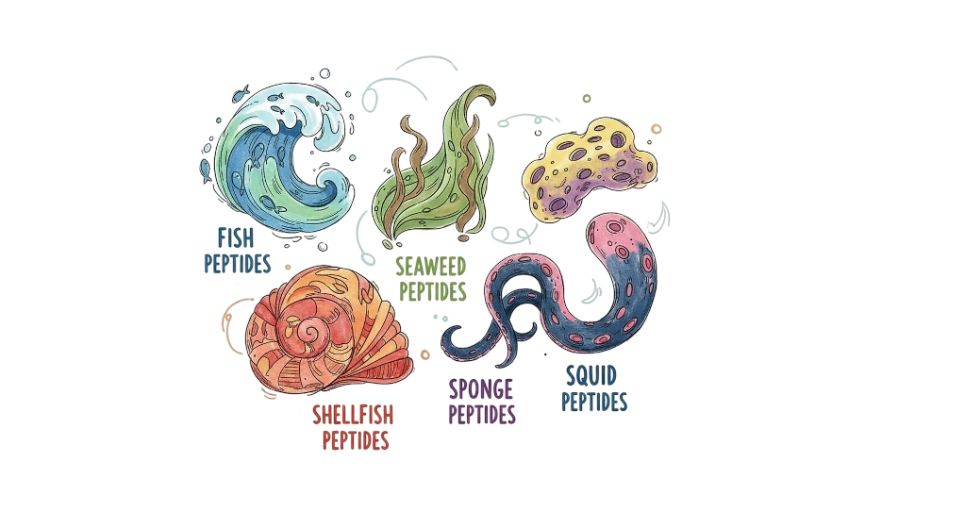MARKET OVERVIEW
The Global Pea Protein Market is coming up fast with companies acknowledging its range and uses. Plant-based protein alternative sources are demand-driven in most sectors such as food and beverage, pharmaceuticals, sports nutrition, and animal feed. Derived mainly from yellow peas sourced, pea protein is a great source of amino acids and also digested easily, allergen-free, and sustainable for use as well. With more people getting conscious about what they consume, the industry will keep evolving with more products propagating their interest in tastes. Manufacturers and food industries are venturing into making new products in which pea protein is the main ingredient replacing conventional sources of food protein-animal based.
Not merely meant for vegans and vegetarians, but it will reach out to healthy individuals wanting a clean-label, less processed source of protein. A variety of food products such as protein bars, meat alternatives and plant-based beverages will include pea protein in their products for the health-conscious individuals with delicious experience. This would pave way for the enhancement of the Global Pea Protein market concerning improved extraction technology, providing better texture- as well as taste-and solubility suited for its use across various applications.
Besides foods and drinks, the pharmaceutical sector is also likely to benefit from this protein source in therapeutic and medical nutrition products. Due to its ability to promote muscle recovery and maintenance, this will prove to be a key ingredient in specialized diets, particularly for patients recovering from an illness or undergoing surgical procedures. Sports nutrition would also see some augmentation from pea protein-based supplements as more sportsmen and gym-goers look for plant-based alternatives without compromising on performance enhancements.
Sustainability would play a defining role in the future of the Global Pea Protein market. Environmental issues concerning conventional protein sources, such as meat and dairy, energize the need for a more sustainable source like pea protein. It uses less water and emits lower carbon, which agrees with worldwide activities toward reducing their impact on the environment. This is when companies look at alternatives to further enhance their sustainability commitments. Investments in plant-based protein sources will rise.
Animal nutrition is another area where pea protein will find acceptance. Manufacturers of pet food are looking into plant-based formulations to address the increasing demand for high-quality, nutritious, and digestible protein sources for pets. The Global Pea Protein market will address this growing segment with solutions that meet pet owners' demands for clean and ethical ingredients.
Sustainability is going to be a huge factor in the Global Pea Protein market. Given the negative environmental implications of traditional sources of protein such as meat and dairy, pea protein will certainly come up as a more sustainable type. It requires even less water and exerts a lower carbon footprint, fully aligning with worldwide initiatives to reduce environmental damages. As firms work on how to improve their sustainability initiatives, investments in plant protein sources will probably keep rising.
Animal nutrition could be yet another category for pea protein applications. Pet food manufacturers are banking on plant-based formulations that meet the growing demand for high-quality, nutritious, and easily digestible protein sources for pets. In this expanding segment, the Global Pea Protein market will provide solutions that conform to pet owners' expectations of clean and ethical ingredients.
Pea protein processing will be further technologically developed to improve functionality and broaden its applications. Research and development efforts will focus on improving sensory properties, decreasing off-flavors, and maximizing protein concentrations to match other plant-derived proteins. With investments continuing and consumer demand pivoting the industry, the Global Pea Protein market will increase, allowing new product developments to meet various needs both for companies and end-consumers.
Global Pea Protein market is estimated to reach $5,902.27 Million by 2032; growing at a CAGR of 12.2% from 2025 to 2032.

GROWTH FACTORS
It is growing with the emergence of the Global Pea Protein market, which is, in turn, mainly fuelled by the demand for plant-based proteins. Also, there is increasing attention directed towards health and fitness. It has been noticed that many individuals are shifting from proteins towards plant-based alternatives owing to the health incentives provided by such sources. Pea proteins have become popular in the minds of the public, encouraging the choice of such sustainable and allergen-free proteins. It perfectly suits those intolerant to lactose, allergic to soy, or following vegan regimens. With the fashions in fitness continuing to influence consumers' behavior regarding the consumption of protein-rich products, it is apparent that consumption will keep on expanding.
In spite of the growing acceptance, there are some challenges that may hinder the pace at which the market grows. Of the hurdles, perhaps one of the most difficult to overcome is high production costs. Advanced technology and a considerable investment are required to extract and process pea protein. Thus, its production is more costly when compared to some other sources of proteins. Another long-celebrated issue is taste and texture. Pea proteins products are sliced through grittiness or earthy flavors, making them not so palatable, according to certain consumers. Manufacturers continue to do everything to improve these areas through better processing methods and reformulation.
While identified as challenges, the growing demand for pea protein in functional foods and beverages could be a promising opportunity ahead. Increasing companies' involvement in developing functional foods or beverages will definitely be an advantage for them as more health-keen consumers are expected to use such products. It's in protein shakes, plant-based meat alternatives, yogurt dairy-free, and even snacks. The industry seems to be continually growing in clean label and high protein demand. It also became a source of innovation in the industry. Companies investing in research and development are likely to benefit from this trend of major improved formulations believing that their output will be better in terms of taste and texture while still retaining nutritional value.
It predicts that in the future, China's pea protein market will continue to grow with the changing demand of consumers preferring more plant-based nutrition. Advanced research and investment in processing technologies and new product development are likely to solve most of the existing bottlenecks, making pea protein appealing to an even wider audience. Awareness of the advantages of using it has grown, while in the future, the demand for healthier foods is bound to keep on increasing; thus, the market has a steady growth prospect.
MARKET SEGMENTATION
By Type
With plant-based protein growing popular, the Global Pea Protein market is also getting more attention. Due to its high protein content and allergen-free, pea protein is leveraged in food and beverage production, in dietary supplements, superfood powders, and pet food. The growing pea protein demand emerges as a sustainable and healthy alternative protein option for consumers. Industries are increasingly looking for innovative products containing pea protein that respond to changes in dietary preferences and growing awareness of plant-based nutrition.
Separate types of pea proteins for different purposes: the isolated, which, with an annual demand of $1,446.08 million, is rewarded for a much higher protein concentration, smooth, and ideal for protein powders, beverages, and dairy substitutes. Concentrate delivers an appropriate protein profile while maintaining fiber in snack, cereal, and meal replacement applications. Textured and hydrolyzed pea proteins mainly found in meat substitutes and processed food in the forms of providing structures and enriching the nutritional value of plant-based products.
Thus, it can be weight management, muscle-building, and benefits related to heart health that are increasing the adoption of pea protein. It also has all essential amino acids, is easy to digest, and is thus suitable for anyone with dietary restrictions such as avoiding soy or dairy. With the increased orientation of people towards veganism and vegetarianism, this market is creating a large demand from food manufacturers interested in producing healthier, sustainable products.
The investments made by the companies in the domain towards R&D will be expected to help improve the functionality as well as the taste for the processed food items made from pea protein. Advancements made in processing methods are helping towards achieving improved texture and solubility for the pea protein so that it becomes versatile for application uses in different food. Also, the ability to innovate new formulations that take into consideration the changing requirements of the consumers results from the partnerships of food companies with pea protein suppliers.
As such, sustainability is an essential factor driving the growth of this market. Peas need lower water usage and emit far less carbon than other protein sources from animals. It becomes environmentally friendly and keeps pace with the growing sustainability agenda over the food industry. For this reason, more companies are adopting pea protein in their product ranges as a possible contributor to nutrition and environmental goals.
Looking into the future, there would still be growing Global Pea Protein markets because consumer awareness and demand for plant-based alternatives increase. Companies will work on improving product quality and expanding their distribution coverage to reach even larger portions of the population.In the future, the Global Pea Protein market will keep growing as consumer consciousness and demand for plant-based foods increase. Businesses will emphasize product quality enhancement and increase their distribution channels to cater to more people. With its health benefits and eco-friendly production process, pea protein will continue to be a major ingredient in the changing food and beverage sector.
By Form
With changing consumer tastes towards plant-based proteins, the rise in the Global Pea Protein market is evident. The health benefits, eating habits, and above all, call for sustainably produced food have been driving this trend. Nutrition-wise, pea protein is right there; it is rich in amino acids and a substitute for animal proteins. Uses for pea protein in foods and beverages range from meat substitutes, dairy substitutes, nutritional supplements, and functional foods. Much of its acceptance in various regions has been because of a growing number of people turned vegan and vegetarian.
The market is based on forms divided mainly into dry and wet pea protein. Because of the ease of handling, long shelf life, and versatility in applications such as protein powders, baked goods, and snack bars, the dry form is used more than its wet counterpart. Wet pea protein is normally used in processed food applications in which smooth texture and solubility are a priority. Demand for dry and wet forms is subject, on the other hand, to the will of the consumers, advancement of food processing technologies, and changes in dietary trends.
Currently, manufacturers are investing heavily in R&D to further improve the possible taste or texture of pea-protein products in the eyes of the consumer. One of the challenges facing the industry is the aftertaste, which some consumers find objectionable, and the measures needed to overcome this problem. While the companies are modernizing extraction and processing methods to enhance the sensory properties of pea protein, they are striving to accomplish this without lowering the nutritional advantages.
At present, demand for pea protein is enhancing in different parts of the globe, with North American and European ones standing out as the major markets. The high growth of plant-based dietary habits in these areas is obviously steered by the general consumer awareness towards sustainable development and health-oriented diets. Further, with changing dietary trends, the Asia-Pacific segment has experienced a surge in demand, especially in nations accepting plant-based food protein. With the expansion of industries, the innovation in new product development and enhancement of formulations will be driven by the collaboration of food manufacturers with research institutions.
In the future, the Global Pea Protein market will continue to enjoy growth due to the impact of various shifting consumer preferences, advancements in technology, and increased investment in plant-based propositions. With the entry of new players in the market, thus fuelling competition, the focus shall primarily remain on enhancing the quality of products, improving taste, and bringing those products into wider application for the food industry.
By Application
The plant protein consumption shift has ushered in a new bout of anticipated future growth in the global pea protein industry. Varied purposes of pea protein are attracting increasing consumer demand for adaptation into vegetarian, vegan, and lactose-free diets. Pea proteins have been used in so many products. They supply a sustainable alternative to source alternative traditional proteins. Today, the market will be driven further with growing awareness about health and wellness that drives consumers toward eating protein-rich diets without animal products. Hence, the manufacturers are focusing on coming up with diversified product ranges to meet the ever-increasing demand.
Applications of pea protein include meat alternatives, dairy alternatives, snacks, bakery products, protein bars, and shakes. Within meat alternatives, it is a major component in plant-based burgers, sausages, and nuggets and is touted for providing meat-like texture and protein density. It's geared at people who are looking for better and/or more ethical substitutes. Pea protein is blended into dairy alternatives like plant-based milk, yogurts, and cheese to augment their protein content while retaining a creamy mouthfeel.
This has risen due to the number of lactose-intolerant and vegans in natural diets who are increasingly making use of this component in this category. In addition, the snacks and bakery products category has been more boosted by pea protein infusion which adds to the nutritional qualifications of the products without distorting the taste and texture. Protein bars and shakes among fitness enthusiasts and serious athletes have been famous because they supply high protein content for muscle recovery and supplies energy.
Market growth is expected to prove continuous as manufacturers will be investing in R&D to develop superior products concerning taste, texture, and nutrition. Companies also invest in sustainable production methods to be able to meet the increasing demand without harming the environment. Pea protein has been available in various forms, be it isolated, concentrated, or texturized protein; it generally aids the manufacture of many food applications. Further, as consumers become increasingly aware of food allergy or intolerance, they will try to incorporate hypoallergenic sources of protein in their diets, which would further increase the demand for pea protein.
The Global Pea Protein market would continue expanding with more innovations coming up and diversification of applications. The health trend in diets will always keep finding space for manufacturers and consumers.
By End Users
The Global Pea Protein market plays its part as one of the major segments within the food and nutrition industry. The increased application demands give birth to an increased demand for pea proteins among nutrient consmers. The nutritional advantages offered in pea protein have made consumers find it very helpful, especially in seeking plant protein substitutes. As the market grows, different industries are accommodating pea protein in their products to cater to consumer preferences.
Pea protein is mainly applied in the food and beverage market. Recently introduced products include alternative meats, dairy-free drinks, and protein-rich snacks. For instance, pea protein is an excellent alternative to compose a high-protein diet in vegans and vegetarians. Rising health awareness among people has also influenced their demands for clean label and allergen-free products. Pea protein is attractive because it is allergen-free for those who have trouble with dairy, soy, and gluten.
Another segment of application that utilizes pea protein is animal feed. Livestock and pet food are including it into their protein sources for the high digestibility and amino acid profile of pea protein, which will serve as an alternative to the traditional protein sources. Thus, sustainable and nutrient-rich feed options can be created. Besides this, the increasing focus on animal health and nutrition is propelling consumers' demand for quality sources of protein, along with pea protein which seems to have attractive functionalities for feed manufacturers.
Personal care and cosmetics are also adopting pea protein in various formulations. The inclusion of the ingredient in shampoos, hair conditioners, skin care creams, and other beauty applications has been due to its skin-conditioning and hair-strengthening properties. The emphasis on plant-based and natural ingredients by consumers would keep the use of pea protein in cosmetics increasing.
The supplement industry benefits substantially from pea protein. With more people using protein supplements to complement fitness and wellness lifestyles, companies are beginning to present pea protein powders, meal replacements, or health drinks. People normally prefer it because of the dietary restrictions imposed on them or for its facility to those in search of plant-protein alternatives.
As the focus on these emerging industries grows and as naturally healthlegging issues of conflict of interest surface, manufacturers have given priority to processing improvements and innovative product development to further enhance quality and functionality features of pea protein. Opportunities abound for the market in extending the product lines that are useful to a wider net of clientele.
|
Forecast Period |
2025-2032 |
|
Market Size in 2025 |
$2,665.27 million |
|
Market Size by 2032 |
$5,902.27 Million |
|
Growth Rate from 2025 to 2032 |
12.2% |
|
Base Year |
2025 |
|
Regions Covered |
North America, Europe, Asia-Pacific, South America, Middle East & Africa |
REGIONAL ANALYSIS
The Global Market for Pea Protein is increasing since there has become an upsurge in demand for plant proteins among consumers across their range of portfolios. This market began picking up momentum in the health-aspect- and sustainability-forward shouting-it-out-about-in-public. One of the really fast-growing factors in shifting human populations has been health-related regarding protein without animal sources.
Geographically, the market is segregated into North America, Europe, Asia-Pacific, South America, and Middle East and Africa. North America includes the Americas (U.S., Canada, and Mexico), and plant-based products market demand varies upon changing dietary habits and more include using pea proteins in their products by food manufacturers. Europe is composed of the UK, Germany, France, Italy, and the rest of the region. The remarkable rising regulatory approvals and consumer inclination towards plant-based foods would keep European nations ahead in innovation to drive consistent growth in the market.
Some other regions do include the fast-tracked India, China, Japan, South Korea, and a few more, as this region has seen its population rise and disposable incomes climb, now more than ever paired with the increased importance of health and well-being. It has promoted the continued growth of this industry more so in Brazil and Argentina under the slow transformation to plant-based protein sources around the globe. The market in the Middle East and Africa covers the GCC Countries, Egypt, and South Africa and is expected to grow owing to the increasing preference for other protein sources with the rising concern over food safety and health.
The growing require in plant-based foods has build up an incentive for innovation in food companies to innovate even more. Examples of such innovations include forms of treatment through which pea protein can now be incorporated into protein powders, meat, dairy-free alternatives, or nutritional supplements. The trend also adds up to extending studies on the nutritional and functional properties of pea proteins that remain consumer-preferred sources of sustainable and allergenic-free proteins. Still, it may be the consumer behavior in the specific regional context that would decide the fate of the Global Pea Protein Market regarding future product innovations and even business growth in certain regions of the world.

COMPETITIVE PLAYERS
The Global Pea Protein market should stray develop as consumers are being keener on alternatives from plant proteins. The need for pea protein is gained with its nutritional benefits, easily digestible nature, and versatility in food applications. Innovations, improvement of processing techniques, and development of products for different industries such as food and beverage, dietary supplements, and animal feed are some considerations of all the market players. Companies are engaged in providing consumer-driven technologies for plant-based solutions from the growing awareness for plant-based diets, which promote the nutritious yet functional side of their products.
It is the sustainability aspect of pea protein that has made it more populous. Unlike its mainstream animal protein cousins, pea protein is more resource-efficient in its production and hence environmentally compatible. It is also free of those common allergens, dairy and soy, and thus can be consumed by people having such restrictions in their diets. Manufacturers of the food industry have taken it up into their variety of products, including meat substitutes, protein bars, dairy alternatives, and baked goods. In addition, the functional properties of pea protein in texture-building and protein enrichment are the reasons several companies are working with it.
As competition in the market grows, major players focus their R&D to improve product properties and enlarge their production capacity. Roquette, Ingredion, and Kerry Group PLC are working on extraction methods to enhance protein content and functionality of their products. Now Foods, Axiom Foods, Inc., and Burcon Nutrascience are investigating systems to better taste and texture plant-based protein to attract consumers. Meanwhile, companies such as Glanbia, Emsland Group, and Cosucra are working on expanding their market presence through collaborative agreements and product novelties.
The growing demand for clean-label products and natural products have been a booster for pea protein, as consumers desire naturally occurring and minimally processed ingredients. Many manufacturers are coming forth with organic and non-GMO variants of pea protein to comply with consumer expectations. The availability of these products from companies like Nutri-Pea, Shandong Jianyuan Group, AGT Food and Ingredients Inc., and Cargill Incorporated, whom sustainability and efficiency are their focus, will drive further market growth. The employment of pea protein in novel applications and the enhancement of its nutritional profiles will be incessantly developed by industries in response to powerful changes in consumer demands to retain their competitive advantage.
Pea Protein Market Key Segments:
By Type
- Isolate
- Concentrate
- Textured/Hydrolyzed
By Form
- Dry
- Wet
By Application
- Meat Alternatives
- Dairy Alternatives
- Snacks & Bakery Products
- Protein Bars & Shakes
- Others
By End Users
- Food and Beverages
- Animal Feed
- Personal Care and Cosmetics
- Supplements
Key Global Pea Protein Industry Players
- Roquette Frères
- Ingredion Incorporated
- Kerry Group plc
- Now Foods
- Axiom Foods, Inc.
- Burcon Nutrascience
- Glanbia Plc
- Emsland Group
- Cosucra
- Nutri-Pea
- Shandong Jianyuan group
- AGT Food and Ingredients Inc.
- Cargill Incorporated
WHAT REPORT PROVIDES
- Full in-depth analysis of the parent Industry
- Important changes in market and its dynamics
- Segmentation details of the market
- Former, on-going, and projected market analysis in terms of volume and value
- Assessment of niche industry developments
- Market share analysis
- Key strategies of major players
- Emerging segments and regional growth potential








 US: +1 3023308252
US: +1 3023308252






